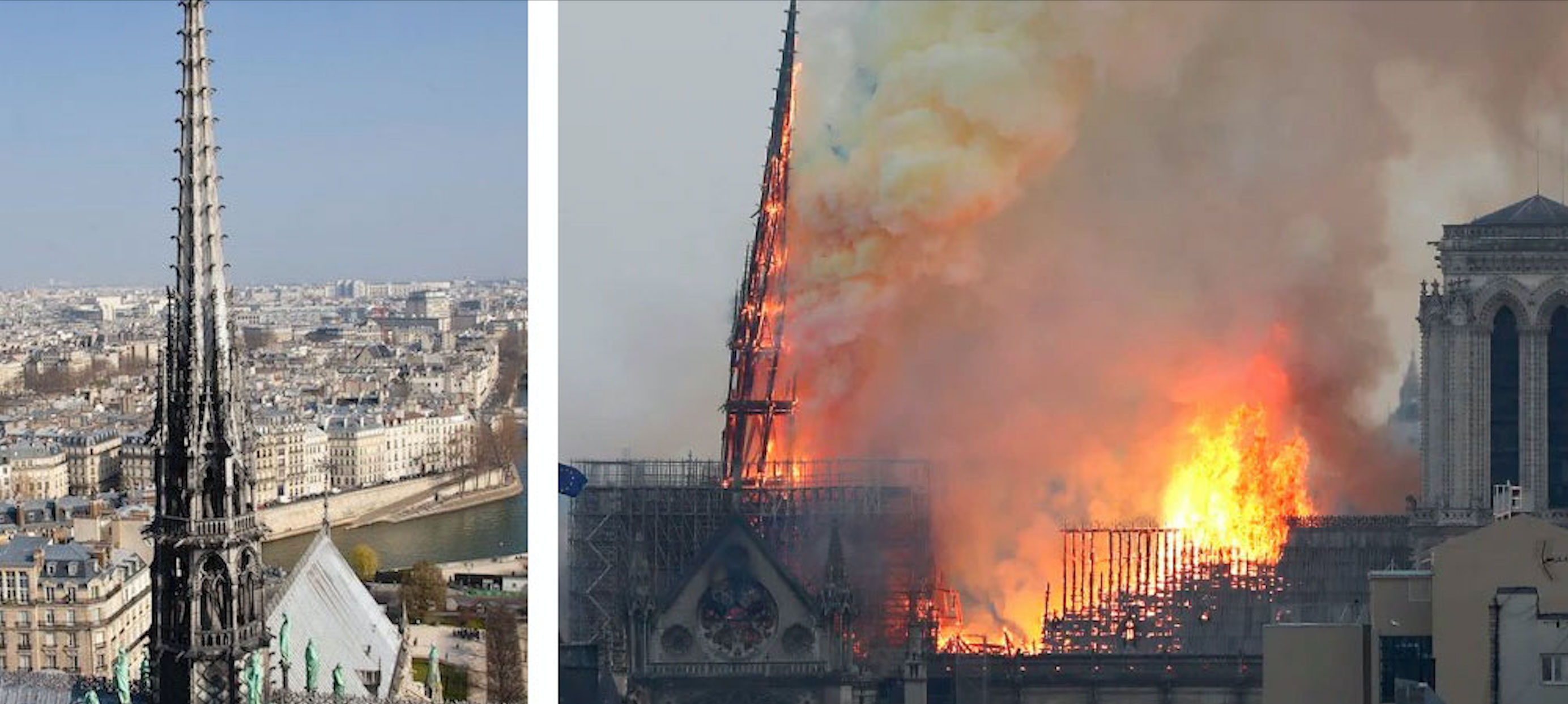Notre-Dame: International Call for Architects to Design New Spire
As Notre-Dame’s spire tumbled from its ancient roof on Tuesday morning Australian-time, French president Emmanuel Macron tweeted he was witnessing “part of us burn”.
Soon thereafter, Macron vowed to rebuild the cathedral, promising an ambitious five-year timeline for its reconstruction in an earnest, televised, national address.
And while the five-year deadline was met with some skepticism, France has now opened a global architectural competition for the spire’s redesign.
Prime Minister Édouard Philippe made the announcement on Wednesday.
“The international competition will allow us to ask the question of whether we should even recreate the spire as it was conceived by Viollet-le-Duc,” Prime Minister Edouard Philippe told reporters.
As is often the case in the evolution of heritage, we should endow Notre-Dame with a new spire.”
Prime minister Philippe added that the competition would determine whether the spire would be a recreation or a new design “adapted to the techniques and the challenges of our era”.
Related: Notre Dame: How a Rebuilt Cathedral Could Be Just as Wonderful

While the Notre-Dame’s construction began in the 12th century — and spanned nearly two centuries — the 93-metre spire was only added in the mid-1800s.
The lead-covered wooden spire was a replacement of the original that was removed in 1786 after old age and neglect left it close to collapse. Architect Viollet-le-Duc was just 30 years old when he was chosen to lead the restoration of the Notre Dame.
On Wednesday, architect Phillippe Villeneuve was photographed retrieving the copper statue of a cockerel that sat atop the spire. The cockerel is “battered but apparently restorable”, the BBC reported.
President of the French building federation Jacques Chanut tweeted the image of Villeneuve, the architect in charge of the restoration, recovering the rooster.
More than $1 billion pledged
The destruction of Notre-Dame prompted an international fund-raising drive, led by some big name billionaires, with pledges far exceeding the AU$1 billion-mark.
The €200 million (A$315m) pledged by France’s richest man Bernard Arnault was quickly matched by French cosmetics giant L’Oreal, while billionaire François-Henri Pinault pledged €100 million.
Australian prime minister Scott Morrison said the government would not contribute to rebuilding the 850-year-old Notre-Dame.
Despite treasurer Josh Frydenberg, former prime minister Malcolm Turnbull and opposition leader Bill Shorten showing support for a collective government fund, the prime minister rejected the idea.
“We’re not making a government fund,” Morrison said.
“If Australians want to make donations to that cause, they're very welcome. [But] I'm not going to mandate it from anybody.”
Opposition leader Bill Shorten said he supported Malcolm Turnbull’s proposal.
“Notre-Dame doesn't just belong to Paris or France, it belongs to the world. I think we, all of us who've enjoyed that architecture, that history, we too should perhaps rally around and help Paris and Notre-Dame.”















